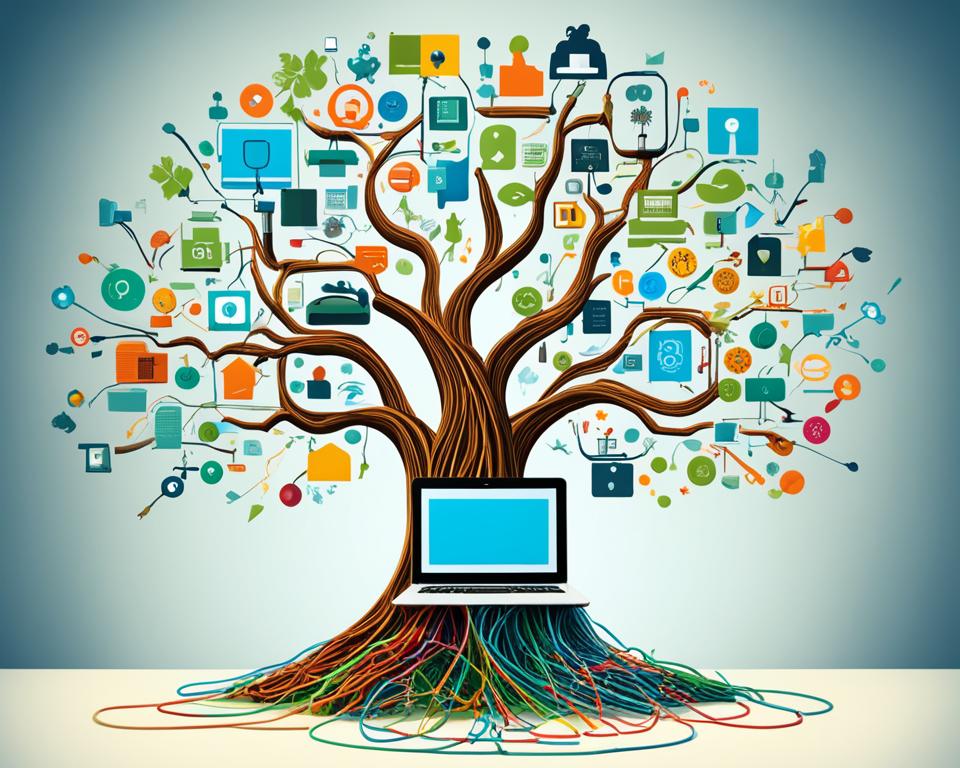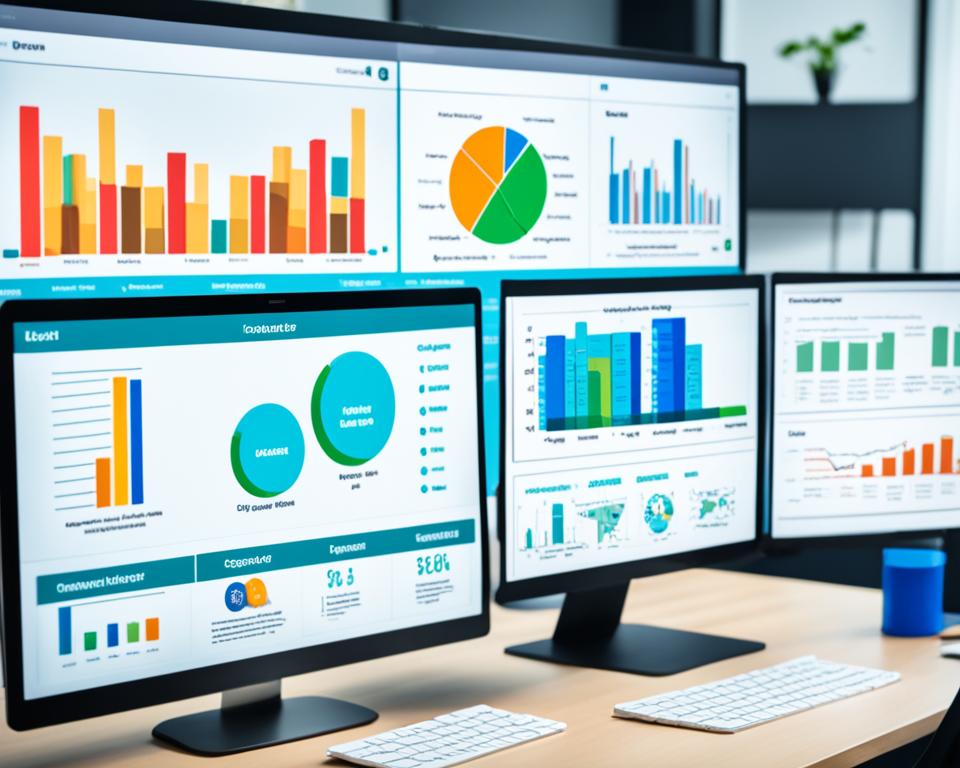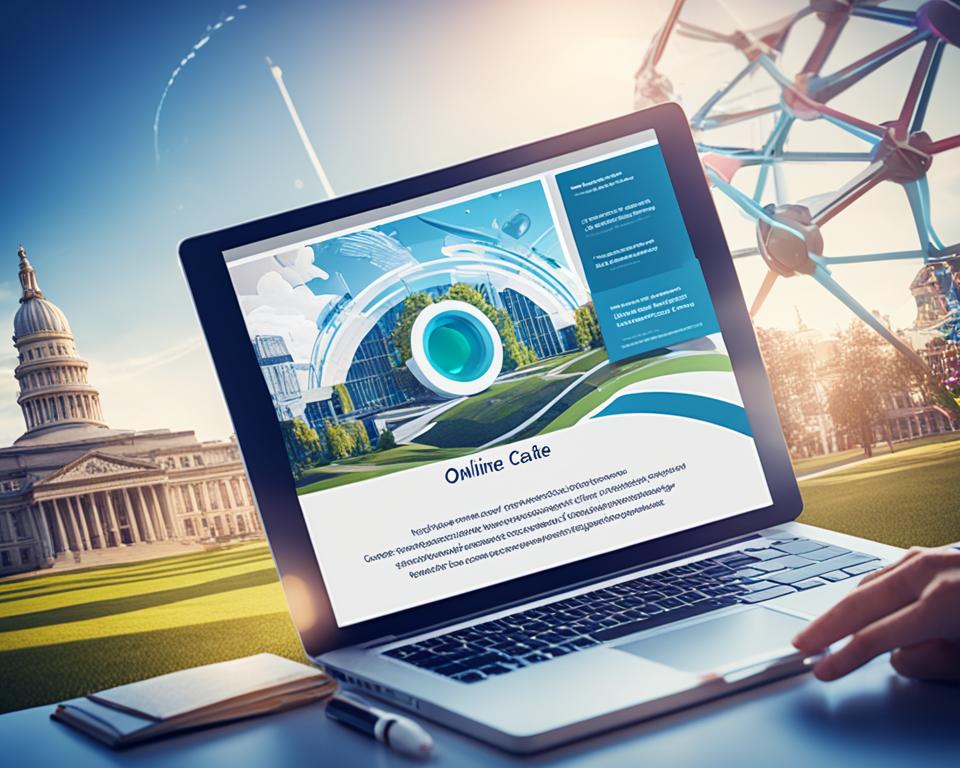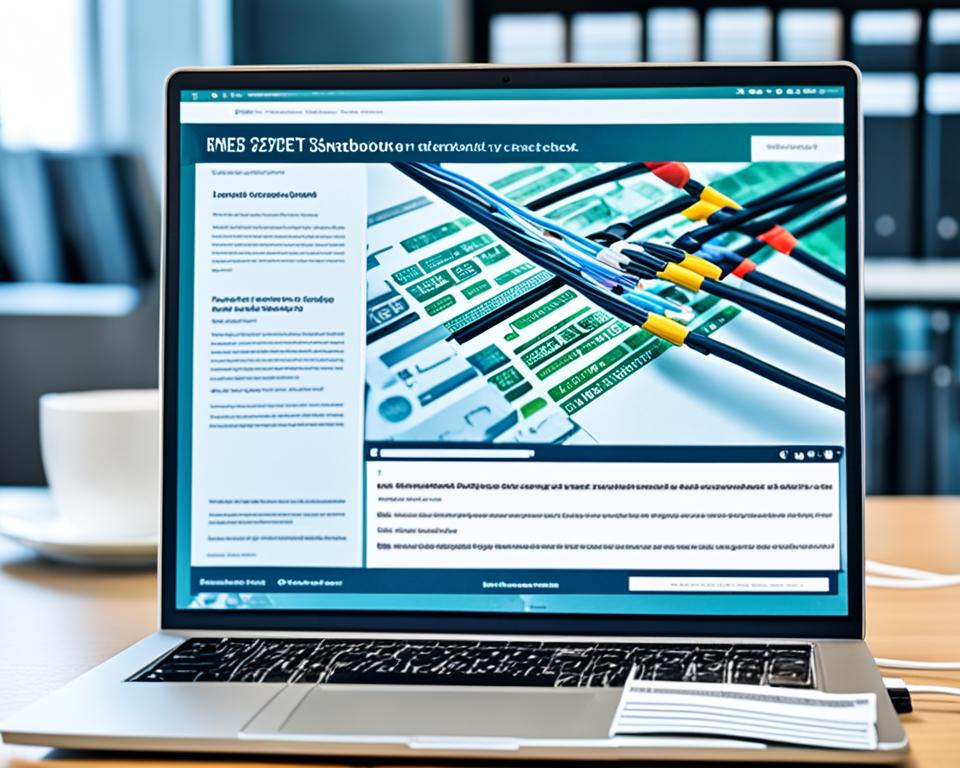Massive Open Online Courses (MOOCs) have become a popular form of online education that allows students from all over the world to access courses from accredited universities and educational institutions. MOOCs provide high-quality education and training without the need to physically attend a classroom, making them accessible to anyone with an internet connection. They have the potential to disrupt traditional education paradigms and transform the roles of students, teachers, and institutions. MOOCs are scalable, cost-effective, and provide learners with access to experts and professionals from all over the world, offering a more holistic learning experience.
Key Takeaways:
- MOOCs are a popular form of online education that provides access to courses from accredited institutions.
- They offer high-quality education without the need for physical attendance, making them accessible to anyone with an internet connection.
- MOOCs have the potential to disrupt traditional education paradigms and transform the roles of students, teachers, and institutions.
- They are scalable, cost-effective, and provide learners with access to experts and professionals from around the world.
- MOOCs offer a more holistic learning experience and have the potential to revolutionize the future of education.
The History and Evolution of MOOCs
Massive Open Online Courses (MOOCs) have a rich history and have evolved significantly since their inception. The concept of MOOCs first emerged in 2008 when Stanford University launched the online course “The Introduction to Artificial Intelligence.” This groundbreaking course attracted an astonishing 160,000 students from 190 countries, igniting global interest in the potential of online learning.
Since then, MOOCs have grown in popularity, offering a diverse range of courses from reputable educational institutions worldwide. They have become a valuable form of online learning, particularly for individuals seeking flexible and self-paced education. MOOCs have effectively democratized access to education by eliminating geographic barriers and providing lifelong learning opportunities.
Much like traditional distance learning, MOOCs enable learners to engage in educational activities from the comfort of their own homes or any location with an internet connection. However, what sets MOOCs apart is their ability to reach a vast student population simultaneously. With MOOCs, educational institutions can educate thousands, even millions, of learners concurrently, making it a cost-effective solution for both students and institutions.
The Impact of MOOCs in Remote Areas
MOOCs have brought educational opportunities to remote areas where access to traditional educational institutions is limited. Many individuals living in rural or underserved communities can now acquire knowledge and skills on a wide range of subjects through MOOCs. This has opened doors to personal and professional development for people who may have otherwise been unable to access higher education.
| Advantages of MOOCs | Challenges of MOOCs |
|---|---|
|
|
Despite the undeniable advantages, MOOCs also face challenges. Low completion rates are a concern, as many students enroll in MOOCs but fail to complete the course. This can be attributed to factors such as self-discipline, motivation, and the absence of face-to-face interaction. Additionally, employers and institutions may have varying levels of recognition for MOOC certificates, which poses questions regarding their value in formal education and career advancement.
Nevertheless, MOOCs continue to evolve and address these challenges, striving to enhance the learning experience and improve outcomes for learners. The future of MOOCs is promising, with the potential to revolutionize education and empower learners worldwide.
The Advantages of MOOCs
MOOCs offer numerous advantages that make them an appealing choice for learners looking to expand their knowledge and skills. With their flexibility, accessibility, and cost-effectiveness, MOOCs have revolutionized the way people learn. Let’s explore the key advantages of MOOCs:
1. Flexibility
One of the significant advantages of MOOCs is the flexibility they provide. Learners can study at their own pace, making it ideal for those with busy schedules or other commitments. Whether you’re a working professional, a student with a full-time course load, or a stay-at-home parent, MOOCs allow you to choose when and where you want to learn. This self-paced learning approach puts you in control of your education, ensuring that you can balance your studies with other responsibilities.
2. Accessibility
MOOCs have made education more accessible than ever before. With just an internet connection, learners can access courses from top universities and institutions around the world. This accessibility eliminates geographical barriers, making it possible for anyone, regardless of their location, to gain knowledge and skills from renowned professors and experts in various fields. MOOCs have opened doors to quality education for people who may not have had the opportunity otherwise.
3. Lifelong Learning
Another advantage of MOOCs is their support for lifelong learning. Whether you want to acquire new skills for personal development or enhance your professional qualifications, MOOCs offer a wide range of courses to suit your interests. Lifelong learning is becoming increasingly important in a rapidly evolving job market, and MOOCs provide a platform for continuous education. With MOOCs, you can stay updated with the latest advancements in your field and adapt to changing industry trends.
4. Cost-Effectiveness
Compared to traditional college courses, MOOCs are often free or available at a fraction of the cost. This cost-effectiveness makes quality education more affordable and accessible to a broader audience. Learners can save money on tuition fees, textbooks, and commuting expenses. Additionally, some MOOC platforms offer financial aid options, further reducing the financial barriers to education. By choosing MOOCs, learners can acquire valuable knowledge and skills without incurring significant financial burdens.
5. Access to High-Quality Resources
MOOCs provide learners with access to high-quality educational resources and expertise from top universities and institutions. Course materials, lecture videos, and assessments are carefully crafted to meet academic standards. Learners can benefit from the expertise of renowned professors and industry professionals. Furthermore, MOOC platforms often incorporate interactive elements such as discussion forums, peer-to-peer learning, and virtual labs, creating an engaging and interactive learning experience.
Overall, the advantages of MOOCs, including flexibility, accessibility, lifelong learning opportunities, cost-effectiveness, and access to high-quality resources, have transformed the educational landscape. With MOOCs, learners can pursue their educational goals, expand their horizons, and embrace a lifelong journey of learning and growth.
| Advantages of MOOCs | |
|---|---|
| 1 | Flexibility |
| 2 | Accessibility |
| 3 | Lifelong Learning |
| 4 | Cost-Effectiveness |
| 5 | Access to High-Quality Resources |
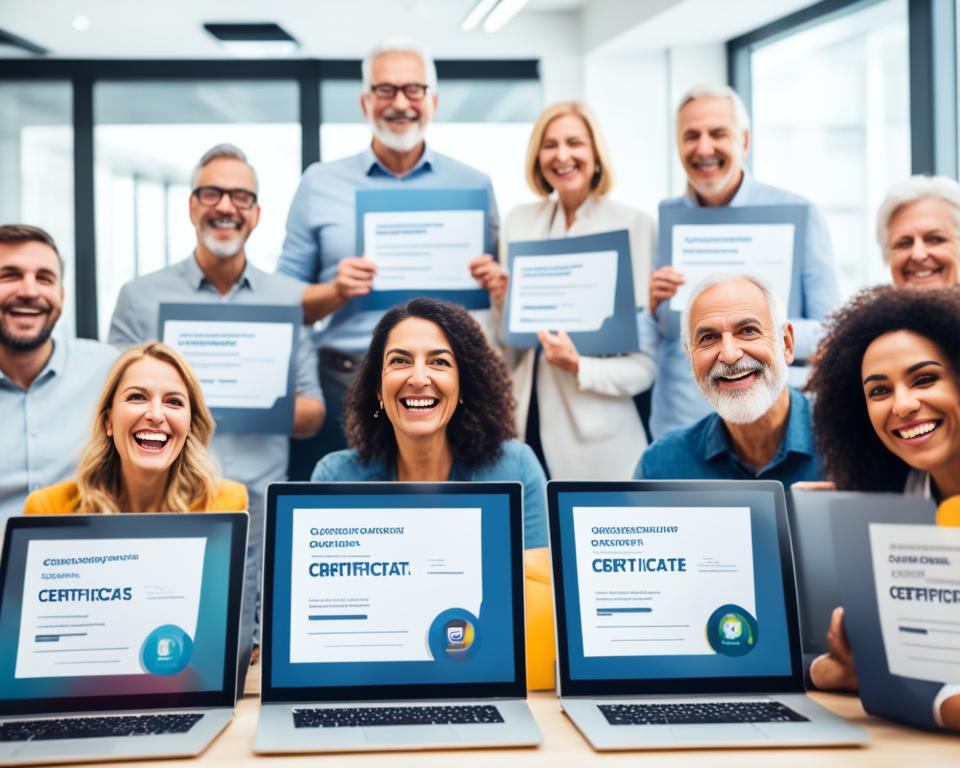
MOOCs and Classroom Learning
Despite concerns that MOOCs might replace conventional classroom learning, they have been found to complement and supplement traditional education rather than replace it. MOOCs can be used as a supplement to classroom learning, providing additional resources and materials for students. They can also help teachers create a more engaging and interactive learning experience and allow them to focus on the more interactive aspects of teaching. MOOCs can enhance traditional education by providing access to a wide range of educational material and technology.
Blended learning, which combines online and face-to-face instruction, has gained popularity in recent years. This approach allows educators to leverage the benefits of both online and classroom learning. By integrating MOOCs into the classroom, educators can provide students with the convenience and flexibility of online learning while also offering the guidance and support of in-person instruction.
Benefits of Blended Learning with MOOCs
Blended learning with MOOCs offers several advantages for both students and teachers:
- Flexibility: Students have the flexibility to access course materials and complete assignments at their own pace, accommodating various learning styles and schedules.
- Supplemental Learning: MOOCs provide additional resources and materials that can enhance classroom instruction, allowing students to explore topics in more depth and at their own pace.
- Personalized Learning: Blended learning enables personalized instruction, allowing teachers to tailor learning experiences based on students’ individual needs and progress.
- Interactive Learning: MOOCs often incorporate interactive elements such as quizzes, simulations, and discussion forums, promoting active engagement and collaboration among students.
- Data-driven Insights: Learning analytics in MOOCs provide valuable data on students’ progress and performance, enabling teachers to identify areas of improvement and provide targeted support.
| Advantages of Blended Learning with MOOCs | Description |
|---|---|
| Flexibility | Students have the freedom to access course materials at their own pace, accommodating different learning styles and schedules. |
| Supplemental Learning | MOOCs provide additional resources that supplement classroom instruction, allowing students to explore topics in more depth. |
| Personalized Learning | Blended learning allows teachers to customize instruction to meet individual student needs and preferences. |
| Interactive Learning | MOOCs incorporate interactive elements like quizzes and discussion forums, fostering active engagement and collaboration. |
| Data-driven Insights | Learning analytics in MOOCs offer valuable data on student progress and performance for targeted support. |
MOOCs and blended learning create a powerful educational combination, leveraging the best of online and classroom learning. By integrating MOOCs into the classroom, educators can offer students a dynamic and personalized learning experience, while also addressing the diverse needs of learners.
Blended learning with MOOCs has the potential to revolutionize education by providing students with the advantages of both traditional classroom learning and online resources. It allows teachers to create a more engaging and interactive learning environment, fostering student success and achievement. The integration of MOOCs into classroom instruction is a testament to the evolving landscape of education and the adaptation of technology to enhance teaching and learning.
MOOC Platforms and Growth
When it comes to MOOC platforms, three names stand out as the leaders: Coursera, edX, and Udacity. These platforms have revolutionized online education, offering a diverse range of courses from prestigious universities and institutions. With the ever-increasing popularity of MOOCs, the growth of these platforms has been remarkable. They have attracted millions of users from around the world, indicating the global demand for accessible and flexible education.
Let’s take a closer look at each of these platforms:
Coursera
Coursera offers a vast catalog of courses on various subjects, ranging from computer science and business to humanities and social sciences. It partners with top universities and organizations to provide high-quality educational content. Coursera’s user-friendly interface and interactive learning experience make it a preferred choice for many learners.
edX
edX is another prominent MOOC platform that collaborates with renowned universities, including Harvard, MIT, and Berkeley, to offer a diverse array of courses. Alongside traditional video lectures, edX incorporates interactive exercises, quizzes, and discussion forums to engage learners and foster a sense of community.
Udacity
Udacity focuses on providing courses that equip learners with practical skills for highly sought-after careers in technology and other industries. It partners with leading industry experts and companies to deliver cutting-edge content, making it an excellent option for those looking to acquire in-demand skills and advance their careers.
As MOOC platforms continue to grow, they are transforming the landscape of education by offering flexibility, convenience, and access to quality courses to a vast number of learners worldwide. MOOCs have revolutionized the way people approach education, enabling individuals to learn at their own pace and from anywhere with an internet connection.
Interested in exploring the growth of MOOCs and the opportunities they offer? Check out the table below for a comparison of some key features offered by Coursera, edX, and Udacity:
| Platform | Course Variety | User Experience | Partnerships |
|---|---|---|---|
| Coursera | Wide range of subjects and disciplines | Interactive and user-friendly interface | Partnerships with top universities and institutions |
| edX | Diverse course selection, especially in STEM fields | Engaging and interactive learning experience | Collaborations with prestigious universities and organizations |
| Udacity | Focus on technical and practical skills | Hands-on learning approach | Partnerships with leading industry experts and companies |
These platforms have played a significant role in the growth of MOOCs, enabling millions of learners to gain knowledge and skills that were once only available through traditional classroom settings. The success and popularity of Coursera, edX, and Udacity demonstrate the immense potential and impact of MOOCs in reshaping the future of education.
MOOCs and the COVID-19 Pandemic
The COVID-19 pandemic has had a profound impact on education, forcing educational institutions around the world to close their doors and transition to remote learning. In this challenging time, Massive Open Online Courses (MOOCs) have emerged as a crucial resource, providing students with uninterrupted access to education.
MOOCs have allowed students to continue their studies while maintaining social distancing measures, ensuring their safety during the pandemic.
With the closure of physical classrooms, MOOCs have become a lifeline for learners, offering an alternative to traditional face-to-face instruction. Students can access a wide range of courses from reputable universities and educational institutions, all from the comfort and safety of their own homes.
The pandemic has highlighted the importance of online learning platforms like MOOCs in ensuring educational continuity during times of crisis. These platforms have not only provided access to course content, but also fostered engagement through interactive learning experiences, discussion forums, and peer collaboration.
The impact of MOOCs during the COVID-19 pandemic goes beyond immediate educational needs. They have also demonstrated the potential for long-term transformation in education, showcasing the effectiveness and scalability of online learning. The pandemic has accelerated the adoption and acceptance of MOOCs, shedding light on their value as a viable and sustainable educational model.
The Benefits of MOOCs during the COVID-19 Pandemic
The benefits of MOOCs during the COVID-19 pandemic are significant and wide-ranging:
- Continuity: MOOCs have allowed students to continue their education uninterrupted, ensuring progress in their studies.
- Flexibility: Learners have the freedom to access course materials and complete assignments at their own pace, accommodating different schedules and circumstances.
- Accessibility: MOOCs have democratized education, providing equal access to quality learning opportunities for individuals regardless of geographic location or socioeconomic background.
- Engagement: Interactive features and collaborative platforms within MOOCs promote active learning and foster student engagement with the course material and fellow learners.
- Global Connections: MOOC platforms have facilitated connections between learners from different countries and cultural backgrounds, promoting cross-cultural understanding and knowledge exchange.
As the world grapples with the challenges of the pandemic, MOOCs have proven to be a valuable tool for education, empowering individuals to continue their learning journeys and adapt to the new normal.
| Benefits of MOOCs during the COVID-19 Pandemic | Description |
|---|---|
| Continuity | Allows students to continue their education without interruption. |
| Flexibility | Enables learners to access course materials at their own pace and convenience. |
| Accessibility | Provides equal access to education for individuals worldwide, regardless of location or socioeconomic status. |
| Engagement | Fosters interactive learning experiences and collaboration among students. |
| Global Connections | Facilitates connections and knowledge exchange between learners from different countries and cultures. |
AI in MOOCs
Artificial intelligence (AI) is revolutionizing the field of online education, particularly in the realm of Massive Open Online Courses (MOOCs). With the integration of AI technologies, MOOCs are able to provide personalized instructions and employ learning analytics to enhance the learning experience for students.
AI algorithms analyze vast amounts of student data, allowing MOOC platforms to offer personalized recommendations and feedback. By understanding individual learning styles, AI can tailor course content to meet the specific needs of each student, ensuring a more engaging and effective learning process.
The application of AI in MOOCs also extends to automated grading and assessment. Utilizing machine learning capabilities, AI can efficiently evaluate student work and provide timely feedback. This eliminates the need for manual grading, allowing instructors to focus on other aspects of teaching and fostering more interactive learning environments.
Furthermore, AI-based learning analytics play a crucial role in MOOCs. By collecting and analyzing data on students’ learning behaviors and performance, AI algorithms can identify patterns and trends. This valuable information enables instructors and educational institutions to gain insights into students’ progress, strengths, and areas where additional support may be needed.
Overall, AI in MOOCs holds great potential for improving the accessibility, effectiveness, and efficiency of online education. By leveraging artificial intelligence, MOOCs can provide adaptive and customized learning paths, enabling students to achieve their educational goals more efficiently. Furthermore, learning analytics powered by AI can help instructors refine their teaching strategies and continuously enhance the learning experience.
Challenges and Limitations of MOOCs
Despite the many advantages of MOOCs, they are not without their challenges and limitations. This section explores some of the key obstacles that MOOCs face, including low completion rates, lack of interaction, and issues with the recognition of certificates.
Low Completion Rates
One of the significant challenges of MOOCs is the low completion rates among students. While many individuals enroll in MOOCs with the intention of completing the courses, a considerable number fail to reach the finish line. This can be attributed to various factors, including a lack of motivation, self-discipline, and time commitment. Without the structure and accountability of traditional classrooms, some learners struggle to stay on track and complete the coursework.
Lack of Interaction
Another challenge that MOOCs face is the limited interaction between students and instructors, as well as among peers. Unlike in-person classes where students can engage in discussions and ask questions in real-time, MOOCs often lack the same level of interaction. While some platforms offer discussion forums and chat features, the experience may still feel impersonal and detached. The lack of interaction can hinder the learning experience, preventing students from fully engaging with the course material.
Recognition of Certificates
The recognition of MOOC certificates by employers and educational institutions varies, leading to concerns about their value for career advancement and formal education. While some employers and institutions acknowledge the knowledge and skills gained through MOOCs, others may view them as less credible compared to degrees or certifications from traditional educational programs. This discrepancy in recognition can make it challenging for individuals to leverage their MOOC certificates in professional settings or for further educational pursuits.
Despite these challenges, MOOC providers and educational institutions are continuously working to address these limitations and enhance the overall learning experience. Through the implementation of innovative features and strategies, they aim to improve completion rates, foster greater interaction, and establish a more standardized recognition of MOOC certificates.
Challenges and Limitations of MOOCs
| Challenges | Solutions |
|---|---|
| Low completion rates | Implement strategies to enhance motivation and provide additional support and guidance to learners throughout the course. |
| Lack of interaction | Introduce more interactive features such as live sessions, discussion boards, and peer-to-peer collaboration to promote engagement and community building. |
| Recognition of certificates | Work towards establishing industry standards and partnerships to enhance the credibility and recognition of MOOC certificates in professional and academic settings. |
By addressing these challenges, MOOCs can further improve their effectiveness and impact in the field of online education, making quality learning accessible to an even broader audience.
Future Trends and Possibilities of MOOCs
The future of MOOCs holds exciting prospects, with the potential for continued growth, innovation, and global impact. As technology advances and the demand for online education continues to rise, MOOCs are poised to reshape the landscape of learning and provide new opportunities for students worldwide.
Global Presence:
MOOCs have already made significant strides in reaching learners around the world, transcending geographical boundaries and democratizing access to education. In the future, we can expect MOOCs to further expand their global presence, bringing high-quality courses and learning resources to individuals in even the most remote areas. This expansion will enable more diverse and inclusive learning experiences, fostering cross-cultural understanding and collaboration.
Integration with Traditional Education:
Universities and educational institutions are increasingly recognizing the value of MOOCs and their potential to complement traditional education. In the coming years, we can anticipate greater integration of MOOCs into existing curricula, as universities incorporate these online courses as supplemental resources for students. This integration will enable students to access a broader range of subjects, explore new fields of study, and enhance their learning experiences.
New Technological Advancements:
The future of MOOCs also holds exciting possibilities for technological advancements that will enhance the learning experience. As AI, virtual reality, and other emerging technologies continue to evolve, MOOCs can leverage these innovations to provide more interactive, immersive, and personalized learning experiences. This integration of technology will enable learners to engage with course materials in novel ways, fostering deeper understanding and knowledge retention.

Implications for Students, Faculty, and Institutions
MOOCs, or Massive Open Online Courses, have far-reaching implications for students, faculty, and educational institutions alike. These digital learning platforms offer a wide range of benefits and opportunities that can transform the roles and experiences of those involved.
For Students
MOOCs provide students with increased access to high-quality education and the flexibility to learn at their own pace. With a diverse catalog of courses available online, students can broaden their knowledge base and acquire new skills that align with the changing demands of the job market. Lifelong learning becomes a possibility, enabling individuals to adapt and stay competitive in an evolving professional landscape.
For Faculty
MOOCs empower faculty members by enhancing their teaching effectiveness. Through these platforms, educators gain access to updated educational materials and cutting-edge technology, enabling them to create engaging and interactive learning experiences for their students. Furthermore, MOOCs offer opportunities for professional development and collaboration with experts from around the world, fostering a culture of continuous improvement among faculty members.
For Educational Institutions
Educational institutions can leverage MOOCs to attract more students and expand their global presence. By offering high-quality instructional materials and resources through these platforms, institutions can position themselves as leaders in digital education. This not only helps them stay competitive but also opens up new avenues for collaboration and partnership with other institutions. MOOCs can be a catalyst for innovation and transformation within educational organizations.
“MOOCs have the potential to democratize education and bridge the gap between learners and educational institutions. They offer flexible learning options and create a pathway for lifelong learning and personal growth. It’s an exciting time to be part of this educational revolution.”
As MOOCs continue to evolve, their implications for students, faculty, and institutions will become even more profound. These digital learning platforms have the potential to reshape the landscape of education, providing greater accessibility and opportunities for all who seek knowledge and personal development.
The Impact of MOOCs on Higher Education
MOOCs have revolutionized higher education, bringing about a transformative impact on traditional learning models. These online courses have the scalability and cost-effectiveness to reach a broader audience of learners, consequently shaping the roles of students, faculty, and institutions. By offering access to high-quality educational resources and cutting-edge technology, MOOCs enhance the competitiveness of educational institutions in today’s digital age.
MOOCs have played a significant role in the transformation of education, disrupting established paradigms and opening up new possibilities. With the flexibility of online learning, students have the freedom to pursue their education at their own pace, without the constraints of physical classrooms. This scalability enables an unprecedented number of learners to access higher education, breaking down barriers and providing opportunities for individuals who may have otherwise been unable to participate.
The emergence of MOOCs has also encouraged educational institutions to adapt and innovate. In response to the rising demand for online courses, universities and colleges have integrated MOOCs into their curricula, creating blended learning experiences that combine physical classroom instruction with online resources. This integration allows institutions to leverage the strengths of both traditional and online education, providing students with a comprehensive and dynamic learning experience.
Furthermore, the competitive nature of MOOCs has driven educational institutions to continually improve their offerings. To attract and retain students, institutions have invested in developing high-quality courses, engaging multimedia content, and interactive learning platforms. The accessibility of MOOCs has raised the bar for education, pushing institutions to deliver exceptional learning experiences that meet the demands of modern learners.

| Impact of MOOCs on Higher Education | Description |
|---|---|
| Transformation of Education | MOOCs have transformed traditional education models, offering scalable and flexible learning opportunities for a broader audience. |
| Scalability | MOOCs provide the ability to reach a large number of learners without the limitations of physical classrooms, allowing for unprecedented access to education. |
| Competitiveness | By offering access to high-quality educational resources and technology, MOOCs have compelled educational institutions to enhance their offerings and stay competitive. |
As MOOCs continue to gain traction and evolve, their impact on higher education is expected to increase in the coming years. These innovative online courses are reshaping the landscape of education, empowering learners and institutions alike. The future of education is being shaped by the transformational power of MOOCs, as they provide lifelong learning opportunities that transcend geographical limitations and offer quality education to individuals from all walks of life.
Conclusion
As the demand for online education continues to grow, MOOCs (Massive Open Online Courses) are positioned to play an increasingly important role in the future of education. With their accessibility, flexibility, and scalability, MOOCs offer a valuable tool for lifelong learning and skill development. Despite the challenges and limitations they face, the advantages of MOOCs outweigh the drawbacks, and their impact on higher education is significant.
MOOCs provide learners with the ability to acquire knowledge and expertise from top educational institutions without the need for physical classrooms. This accessibility empowers individuals from all over the world to access high-quality education, leveling the playing field and providing equal opportunities for learners. Furthermore, MOOCs offer flexibility in terms of learning pace and location, allowing students to study at their own convenience, whether it be during breaks from work or in the comfort of their own homes.
Looking towards the future, as technology continues to advance and online learning evolves, MOOCs have the potential to revolutionize education. They can bridge the gap between traditional and digital learning, bringing together the best of both worlds. With their scalability, MOOCs have the capacity to reach a broader audience, making quality education accessible to learners who may not have had the opportunity otherwise. This democratization of education has the power to transform lives and communities, fostering a society of lifelong learners.
In conclusion, MOOCs are paving the way for the future of education. With their immense potential and the growing demand for online learning, it is clear that MOOCs will continue to shape the educational landscape. By leveraging technology and innovation, MOOCs can provide equal access to quality education, empowering individuals to learn and grow in an ever-changing world.
FAQ
What are MOOCs?
MOOCs, or Massive Open Online Courses, are online education platforms that provide access to courses from accredited universities and educational institutions. They allow students from all over the world to learn at their own pace, without the need to physically attend a classroom.
How do MOOCs work?
MOOCs deliver course material through digital platforms, enabling students to access lectures, assignments, and resources online. Students can study at their own pace, interact with instructors and peers through discussion forums, and complete assessments to demonstrate their understanding of the material.
Are MOOCs free?
Many MOOCs are free to access, although there may be fees associated with obtaining a certificate of completion or accessing additional resources. However, some platforms offer paid options that provide additional benefits and support.
Can I earn academic credit for completing a MOOC?
MOOCs do not typically offer formal academic credit from traditional educational institutions. However, some platforms have started to offer credit-eligible courses or partnerships with universities that allow students to earn credit towards a degree.
Are MOOCs recognized by employers?
The value of MOOC certificates in the job market varies depending on the employer and industry. While some employers may recognize the skills and knowledge gained from completing MOOCs, others may place more emphasis on formal education or traditional degrees.
Can MOOCs replace traditional classroom learning?
MOOCs are not intended to replace traditional classroom learning but rather to complement and supplement it. MOOCs provide an additional resource for students and can enhance the learning experience, especially when utilized in blended learning environments.
How can MOOCs benefit lifelong learners?
MOOCs offer opportunities for lifelong learning by providing access to high-quality education and professional development resources. Lifelong learners can continuously acquire new skills and knowledge, enabling them to adapt to changes in the job market and pursue personal growth.
What role does artificial intelligence (AI) play in MOOCs?
AI in MOOCs enables personalized instruction and learning analytics. AI algorithms analyze student data to provide personalized recommendations, feedback, and adaptive learning paths. AI technology also facilitates automated grading and assessment, improving efficiency and enhancing the learning experience.
What are the main challenges of MOOCs?
Low completion rates are a significant challenge for MOOCs, with many students enrolling but not completing the courses. Limited interaction with instructors and peers, as well as a lack of motivation and self-discipline, can contribute to low completion rates. Additionally, the recognition of MOOC certificates by employers and educational institutions may also present challenges.
What is the future of MOOCs?
The future of MOOCs is promising, with continued growth, innovation, and integration with traditional education. MOOCs are expected to reach a broader audience, establish a global presence, and offer new technological advancements that enhance the learning experience. They have the potential to revolutionize education and provide equal access to quality education worldwide.
What are the implications of MOOCs for students, faculty, and institutions?
MOOCs offer increased access to education for students, allowing flexibility in learning and continuous skill development. Faculty members can enhance teaching effectiveness and access updated resources through MOOCs. Educational institutions can benefit by attracting more students, creating a global presence, and staying competitive by offering cutting-edge instructional materials and resources.
How do MOOCs impact higher education?
MOOCs have the potential to transform traditional education models by offering scalable and cost-effective approaches. They can enhance the competitiveness of educational institutions by providing access to high-quality resources and technology. As MOOCs continue to grow and be adopted, their influence on higher education is expected to increase.

